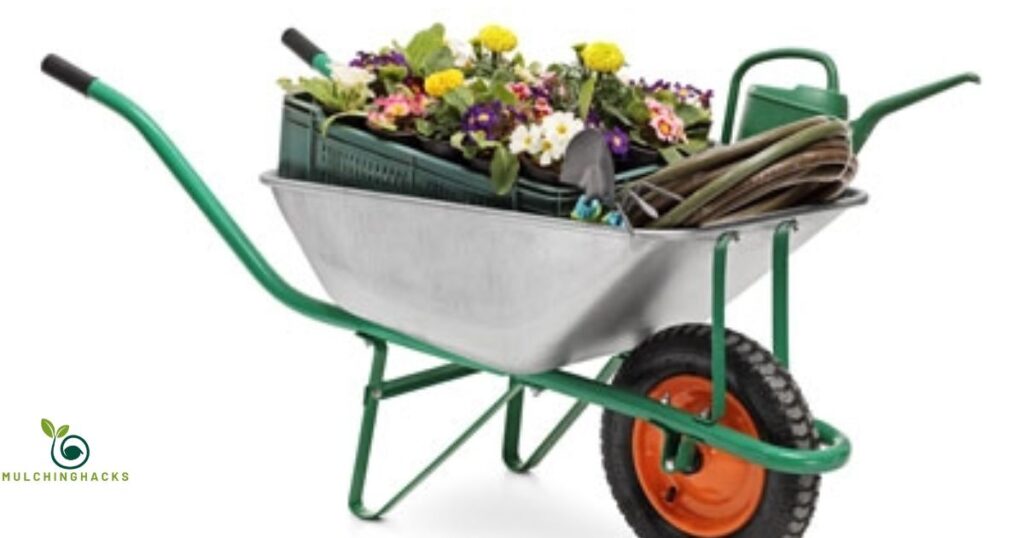How many wheelbarrows in a yard of mulch refers to the calculation of how much mulch can fit into standard wheelbarrows when dealing with a bulk quantity of mulch measured in cubic yards. It helps gardeners and landscapers estimate the number of trips needed to transport
When tackling a landscaping project, knowing How many wheelbarrows are in a yard of mulch can be the key to saving both time and effort. This simple calculation guides you in understanding how much mulch can be transported in standard wheelbarrows, making your gardening tasks more manageable and efficient.
Explore further to uncover the essential aspects of understanding the number of wheelbarrows required for a yard of mulch. This valuable insight simplifies your gardening and landscaping efforts, making outdoor projects more efficient and success
How Many Loads in a Yard of Mulch?
The number of loads in a yard of mulch depends on the size and capacity of the vehicle or container you’re using to transport the mulch. In a pickup truck, for instance, you might be able to fit 2-3 cubic yards. Mulch is on a pallet If you’re using a smaller container like a wheelbarrow, it would take many more loads to transport a yard of mulch. The specific number of loads can vary, so it’s important to consider the size and capacity of your transport vehicle or container to determine how many loads are needed for a yard of mulch.
What is the average size of a wheelbarrow?
The average size of a wheelbarrow can vary, but a standard wheelbarrow has a capacity of around 6 to 8 cubic feet (about 0.17 to 0.23 cubic meters). The dimensions of a wheelbarrow tray are approximately 3 feet (36 inches) in length, 2 feet (24 inches) in width, and 1 foot (12 inches) in depth. There are variations in wheelbarrow sizes, and some may have larger or smaller trays to accommodate different tasks and preferences. When estimating the number of wheelbarrow loads needed for a project, it’s essential to consider the specific size and capacity of the wheelbarrow you are using.
How do you calculate the wheelbarrow?
Calculating the number of wheelbarrow loads needed for a specific task, like moving mulch, can be done by following these steps:
Determine the Volume
First, measure the volume of the material you’re transporting. If you’re dealing with mulch, it’s often measured in cubic yards. Make sure your measurements are in the same units, for example, cubic yards.
Measure the Wheelbarrow
Measure the capacity of your wheelbarrow in cubic feet or cubic yards, depending on the units you’re using for the material. Standard wheelbarrows hold around 6 to 8 cubic feet.
Calculate
Divide the total volume of material (in cubic yards) by the capacity of your wheelbarrow (in the same units, either cubic yards or cubic feet). This will give you the number of wheelbarrow loads needed to transport the material.
Number of Wheelbarrow Loads = Total Volume (in cubic yards) / Wheelbarrow Capacity (in cubic yards or cubic feet)
For example, if you have 3 cubic yards of mulch to move and your wheelbarrow can hold 0.5 cubic yards, the calculation would be:
Number of Wheelbarrow Loads = 3 cubic yards / 0.5 cubic yards = 6 loads
So, you would need 6 wheelbarrow loads to move 3 cubic yards of mulch.
What is the load capacity of a wheelbarrow?
The load capacity of a wheelbarrow can vary depending on the type and size of the wheelbarrow. Standard wheelbarrows have a load capacity ranging from 300 to 550 pounds (about 136 to 250 kilograms). There are heavy-duty wheelbarrows available with even higher load capacities, sometimes exceeding 1,000 pounds (450 kilograms).
It’s essential to check the manufacturer’s specifications for the specific wheelbarrow you are using, as the load capacity can vary between models and brands. Overloading a wheelbarrow beyond its stated capacity can be unsafe and may result in damage to the wheelbarrow or injury.
How many kg of sand are in 1 wheelbarrow?
The weight of sand in one wheelbarrow can vary depending on the size and capacity of the wheelbarrow, as well as the type of sand (e.g., wet or dry). A standard wheelbarrow can hold a load of sand ranging from 100 to 200 pounds (about 45 to 90 kilograms) when filled level to the top. This load capacity can be affected by the size and design of the wheelbarrow.
It’s essential to consider the specific capacity and dimensions of your wheelbarrow to estimate the weight of sand it can hold. Additionally, take care not to overload the wheelbarrow to ensure safe and manageable transport.
What is the physics behind a wheelbarrow?

The physics behind a wheelbarrow involves principles of mechanics related to the equilibrium of forces and the lever system. A wheelbarrow is a simple tool used for carrying and transporting heavy loads, and its design helps reduce the amount of effort required to move these loads.
Here are the key physics principles involved in a wheelbarrow:
Levers
A wheelbarrow is essentially a class 2 lever. It consists of a long beam (the handles), a pivot point (the wheel or fulcrum), and the load (the material in the container). The operator applies a force on one end of the handles, which acts as the input force, while the load is placed in the container, serving as the output force. By applying a relatively small force over a longer distance on the handles, the user can lift and transport a heavy load with much less effort than if they were carrying.
Mechanical Advantage
The mechanical advantage of a wheelbarrow is achieved by the lever system. The mechanical advantage is the ratio of the length of the input arm (the distance from the handles to the fulcrum) to the length of the output arm (the distance from the fulcrum to the load). In a wheelbarrow, the input arm is longer than the output arm, which means you can lift a much heavier load with less force, as long as the lengths of the arms are appropriately designed.
Balance and Stability
The placement of the wheel as the fulcrum is crucial for stability and balance. It helps support the weight of the load, preventing it from tipping over as long as the load remains within the wheelbarrow’s weight limit and is distributed evenly. This balance is important to ensure that the wheelbarrow is easy to maneuver and does not become unstable during use.
Rolling Friction
The wheel on the wheelbarrow also plays a significant role in reducing the force required to move the load. The wheel reduces the friction between the wheelbarrow and the ground, making it easier to push or pull the wheelbarrow, especially when it is filled with heavy materials.
The physics of a wheelbarrow is primarily based on the principles of levers, mechanical advantage, and balance. It allows users to move heavy loads with less physical effort, making it a practical tool for various tasks, such as gardening, construction, and landscaping.
FAQ
How many wheelbarrows are in a yard of mulch?
The number of wheelbarrows in a yard of mulch can vary, but on average, you can expect to fill approximately 13 to 15 standard-sized wheelbarrows with one yard of mulch.
What is the size of a standard wheelbarrow?
A standard wheelbarrow has a volume of around 6 cubic feet. This can vary, so it’s a good idea to measure your specific wheelbarrow to get an accurate estimate.
How can I calculate the number of wheelbarrows needed for my project?
To calculate the number of wheelbarrows needed for a specific project, divide the total volume of mulch required by the volume of one wheelbarrow. Keep in mind that this is an approximation, as the density of the mulch may vary.
What factors can affect the number of wheelbarrows needed for mulch?
Factors that can affect the number of wheelbarrows needed include the size and capacity of the wheelbarrow, the density of the mulch, and how evenly it is loaded into the wheelbarrow.
How can I ensure an accurate estimate for my mulch project?
To get a precise estimate, consider measuring the volume of your wheelbarrow and calculating the density of the mulch you plan to use. This will help you determine the exact number of wheelbarrows needed for your specific project.
conclusion
the number of wheelbarrows required to transport one yard of mulch can vary depending on several factors, including the size and capacity of the wheelbarrow, as well as how densely the mulch is loaded into it. On average, one yard of mulch, which is equivalent to 27 cubic feet, can be expected to fill approximately 13 to 15 standard-sized wheelbarrows. It’s important to note that this is an estimate, and the actual number of wheelbarrows needed may differ based on the specific circumstances of your project. For the most accurate estimate, consider measuring your wheelbarrow’s volume and assessing the density of the mulch to ensure efficient and precise transportation for your landscaping or gardening needs.



















